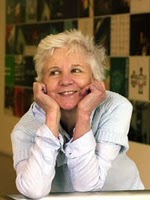“We are told that the body needs to be stronger, that we need to sweat and to perspire. Therefore to be in shape, we bike, we hang upside down, we jog, we lift weights. What we should first be doing is to open our eyes and look at our body to understand how it functions.” Thérèse Bertherat, founder of anti-gymnastique, in The Body Has Its Reasons.
In the 1970s Thérèse Bertherat, a French physiotherapist, developed a practice called Anti-gymnastique. In 1976 she authored a book called The Body Has It’s Reasons, which has influenced me as much as any other work. Bertherat based her work on the teachings of another physiotherapist Françoise Mézières, who she studied with, and was a practitioner of his method for many years. She has written four other books that have not been translated into English.
Therese Bertherat’s Anti-gymnastique is a self-healing modality that spans psychological, emotional, and physical territories. Get to know your body and its patterns on a journey of self discovery, hoping over time to discover why you have many of the patterns that might be holding you back. And ultimately the goal is to release the body into a more natural balanced alignment.
The simplest way to describe anti-gymnastique is that we are all short and tight in the back of our bodies. Betherat posits that we are all short the in the muscles of the lower back, the neck, the hamstrings at the back of the thighs, and the calves, etc. And there is a corresponding looseness or laxity at the front of the body; in the throat, the belly, the thighs, etc.
I start most of my lectures with this proposition. We are all basically splayed open and need to find our way back to the center or core of the body. When it comes to posture, we all lean backwards into this tightness as the back body shortens and we need to figure a way out of this common pattern.
Therese Bertherat and anti-gymnastique have been a huge influence on the work I do. You can find a link to the book in our amazon products box on the right column if you are interested in learning more about her work.
***

